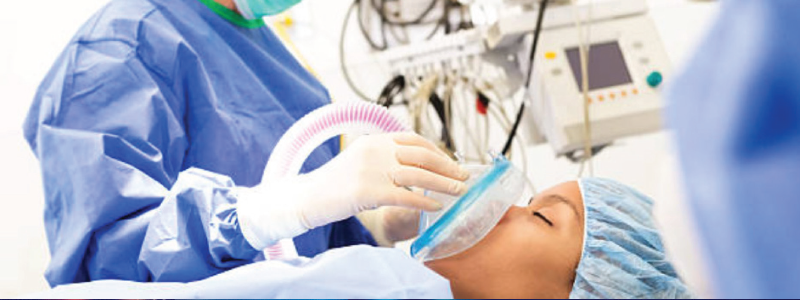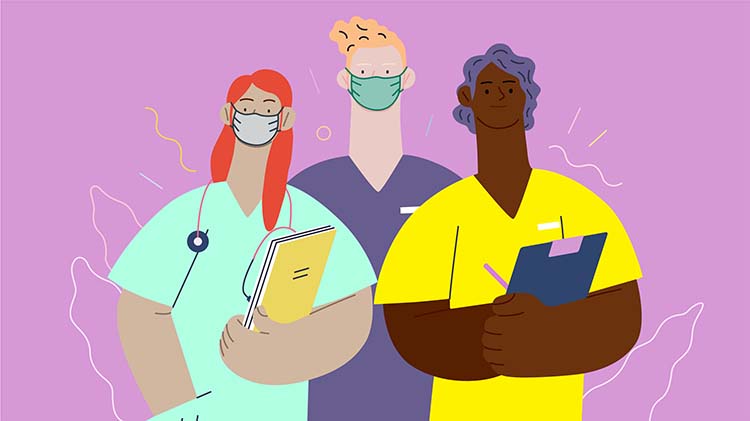Anaesthetist’s Negligence Leads to Costly Consequences
29 May 2018

Consider this case study. Mr Hobson suffered from Noonan syndrome with associated lordoscoliosis of his thoracic spine.
When he was 24 years of age, Mr Hobson sought advice from the Spine Clinic to see if surgery would improve his restrictive lung disease which was causing severe shortness of breath on exertion.
The Surgeon noted the patient had a significantly reduced vertebro-sternal distance due to his thoracic scoliosis. He thought the patient would benefit from surgical correction of his lordoscoliosis to increase his lung capacity and prevent further deterioration of his lung disease. The Surgeon discussed the option of combined anterior and posterior approaches in two stages: wedge osteotomies through the apex of his thoracic lordoscoliosis and subsequent posterior fusion of his spine. The first stage involved a thoracotomy, in conjunction with a Cardiothoracic Surgeon. The second stage was a posterior instrumented fusion from T2 to L1, following the anterior release to correct the lordoscoliosis to a more normal kyphosis of the thoracic spine.
On 13 November 2009, the patient underwent the anterior procedure which was uneventful. The original plan was to perform the second operation 10 days later; however, on 15 November 2009, the patient was found to have extrinsic compression of his left main bronchus with collapse of his left lobe and pneumonia. The ICU staff were having increasing difficulty maintaining the patient’s oxygen saturation and asked that the second stage surgery be brought forward.
17 November 2009
The patient was reviewed and the treating team was of the opinion that surgery needed to be performed as soon as possible, or the patient might die as a result of his worsening respiratory problems. The on-duty Anaesthetist, Dr A, was contacted by the Surgeon.
12:30 – Dr A went to the ICU to satisfy himself that the surgery was urgent and to assess the patient's clinical status from an anaesthetic perspective.
14:40 – Dr A returned to the ICU with another senior Anaesthetist who had extensive experience in anaesthesia for spinal surgery. The Anaesthetist performed a bronchoscopy and found the left main bronchus compressed but permitting the insertion of the bronchoscope through the obstruction. The surgery was scheduled for the evening to facilitate the attendance of the Physician in charge of the spinal monitoring.
18:00 – The patient was taken to theatre. A double lumen tube was inserted which was able to be advanced far enough to splint open the left main bronchus. The anaesthetic agents administered were compatible with spinal cord monitoring.
19:15 – The patient was turned prone on a Jackson table. There was a slight decrease in blood pressure which was corrected with Metaraminol 0.5 mg. The CVP was 32. The blood gases at this time revealed: PO2 243 mmHg and PCO2 65 mmHg.
20:30 – The PCO2 had increased to 70.5 mmHg. There was decreased pH (7.027), decreased base excess and increased lactate (8.2 mmol/l). Dr A administered Vecuronium 4mg after informing the Surgeon that this would affect the spinal cord monitoring. The arterial carbon dioxide levels remained elevated. Dr A checked for mechanical problems, checking the breathing circuit and the position of the tube with the bronchoscope several times. He tried hand ventilation and considered the possibility of a pneumothorax and breath stacking in the left thorax. After ruling out respiratory and equipment-related causes, Dr A considered the cause was likely cardiac, even though the patient's blood pressure remained stable at 150 systolic.
20:50 – Dr A telephoned the Anaesthetist who had reviewed the patient in ICU and also the Cardiothoracic Surgeon who was involved in the first stage procedure to discuss the situation – the Anaesthetist informed Dr A it must be due to “dead space” and not a problem with ventilation.
21:15 – The exhaled carbon dioxide expired waveform had diminished (30 to 25 mmHg). The CVP was 37 and Dr A was concerned that the patient's right ventricle was failing.
21:25 – The patient suffered an episode of profound cardiovascular collapse. Dr A administered adrenaline and directed the Surgeon to stop the procedure. The Surgeon quickly closed the wound and the patient was turned supine with immediate improvement in his condition.
Post-operatively, the patient was paraplegic. The cause of the paraplegia was an ischaemic injury to his spinal cord.
The patient's spinal fusion was successfully completed on 11 December 2009, without further complication.
Medico-legal issues
Supreme Court Judgment1
The patient commenced negligence proceedings against the Surgeons, Anaesthetist, Physician who performed the spinal monitoring and the hospital. The claim proceeded to a Supreme Court hearing in November 2016 and judgment was handed down on 17 May 2017.
Ultimately, the patient only pursued the proceedings against the principal Surgeon (Dr S) and the Anaesthetist (Dr A). The judge found them both negligent:
- Dr A – for not advising that surgery should have been abandoned no later than approximately 21:00
- Dr S – for not ceasing surgery at that time.
Damages of $3,828,075 plus legal costs were awarded against the Surgeon and the Anaesthetist.
Court of Appeal Judgment2
Both doctors appealed the decision. The matter was heard on 6 and 7 November 2017 and the Court of Appeal handed down its decision on 1 March 2018. By majority, the Court dismissed the Anaesthetist’s appeal but unanimously allowed the Surgeon's appeal. This left the Anaesthetist liable for the full award of damages.
The judgment confirmed that Dr A's decision to allow the procedure to continue for 30 minutes after he had sought help from two experienced colleagues, without success, was a breach of his duty of care:
It was not for Dr A (the Anaesthetist) to assess the urgency of the operation and decide that it justified a serious and immediate intra-operative risk to Mr Hobson being ignored, at least not without consulting Dr S who, as the principal Surgeon, was head of the surgical team.
The judge who dissented and upheld Dr A’s appeal stated that the onus was on the patient’s solicitors to establish that Dr A's decision not to direct the termination of surgery earlier represented a departure from the standard of care and skill required of a specialist Anaesthetist. She found the medical evidence fell “well short of permitting a conclusion to that effect”.
In relation to the Surgeon's successful appeal, the Court stated:
Dr S (the Surgeon) was entitled to rely on Dr A to inform him of any matter of concern without Dr S making any enquiry. There is no evidence that Dr A did so in the period 20:50 to 21:20, and the evidence did not indicate that any matter came to Dr S's notice during that time that should have caused him to make an inquiry as to Mr Hobson's carbon dioxide levels. Without such information, Dr S was not negligent in failing to direct termination of the operation during that period. When Dr A did advise termination of the operation at around 21:25, Dr S promptly did so. Dr S's appeal on liability therefore succeeds.
Summary
This decision highlights the importance of teamwork and communication between a Surgeon and Anaesthetist. The Court noted that Dr S was the principal Surgeon leading a team of specialist medical staff. Although as head of that team he had ultimate authority to make significant decisions regarding the operation, he was entitled to rely on the other team members to perform their duties.
Dr Sara Bird
Manager, Medico-legal and Advisory Services
References
Professional boundaries in healthcare - Part 1
Boundaries with patients present in numerous ways every day and all health practitioners
11 Aug 2025
Understanding Professional Medical Indemnity Insurance
Do you understand the ins and outs of professional medical indemnity insurance?
11 Aug 2025
Professional boundaries in healthcare - Part 2
Boundaries with patients present in numerous ways every day and all health practitioners
11 Aug 2025
Understanding changes to the Fair Work Act
What are the changes to the Fair Work Act and what is my role?
22 Jul 2025







